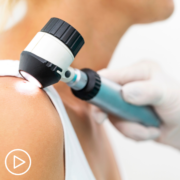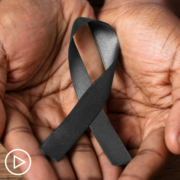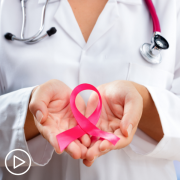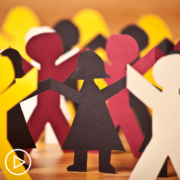How Can Advanced Non-Melanoma Skin Cancer Patients Participate in Their Care?
How Can Advanced Non-Melanoma Skin Cancer Patients Participate in Their Care? from Patient Empowerment Network on Vimeo.
Dr. Vernon Sondak shares encouraging advice for patients to speak up and be active participants in their advanced non-melanoma skin cancer care and treatment decisions.
Related Resources:

|

|

A Review of Current Advanced Non-Melanoma Skin Cancer Treatment Options |
Transcript:
Katherine:
Dr. Sondak, do you think a patient should consider a second opinion or consulting a specialist? If so, what would you say to them, to make them feel comfortable to do that?
Dr. Sondak:
So, I would remind everyone – as we said earlier – advanced skin cancer is not something you can pass off. “Oh, it’s just skin cancer. Everybody gets skin cancer. It’s just minor. Just put a band aid on it.” I’ve seen people who’ve neglected these cancers for a long time, thinking they weren’t serious, or thinking that the treatments were gonna be too awful, too disfiguring, or too toxic. That’s just not the case anymore.
Everyone with advanced skin cancers should have cutting edge appropriate treatment. Cutting edge doesn’t always mean brand new. It might mean the same surgery we’ve been doing for many years. Just done properly and appropriately for that patient.
So, this is a kind of cancer that usually should be treated by very experienced teams. Especially when drug treatment is needed, often when radiation is needed, and certainly when major surgery is needed. Not just the use of the drugs, but the sequence. Which drug first? Which drug second? When is surgery appropriate? When do we do the radiation?
These are sophisticated decisions, and every patient is different. So, we strongly encourage people to go to a center that has a whole panel of different specialists. And they work and talk to each other. They work with each other, work together, talk to each other, and come up with a plan for each patient. If you just go to one doctor, sometimes – an old saying – when all you have is a hammer, everything looks like a nail. There are times when somebody says, “Well, I can do radiation.” Surgeon says, “I can do surgery.” Oncologist says, “I can do chemo, or targeted therapy, or immunotherapy.”
We want them all together, saying “Yeah, but what should we do for this patient?” That’s the goal that we’re striving for. That’s when you’re gonna be the most likely to get the most successful outcome.
Katherine:
Dr. Sondak, what would you like to leave patients with? Are you hopeful?
Dr. Sondak:
We have seen the most dramatic progress in the treatment of these forms of cancer of the skin – melanoma, merkel cell cancer. basal and squamous cell cancers – in my lifetime. Progress I never ever thought I would see. We are not curing everybody, but we are curing a lot more people than we used to.
Yet I still see things about these forms of cancer on the internet that say, “Oh, this is really aggressive. This needs to be treated right away. Don’t wait. Don’t make me go get a second opinion. Have somebody deal with it.”
No. Time out. First thing, it’s better to do it right than to do it right away. Second thing, you don’t get a second chance to make a first impression, and if you go down the wrong treatment path, sometimes you can’t undo that. There is always time to stop and ask, “Am I doing the right thing? Is there somebody who really specializes in this that I should be seeing?”
But the most important advice at all, of course, is you’ve got to get the diagnosis made in the first place. So, that means you have to be willing to go to the doctor, to the dermatologist, to say, “Hey, this doesn’t seem right. It’s just not healing. It just keeps getting worse. What’s going on?”, and then have to be willing to follow up and go through treatments.
If you do, we are extremely optimistic. We are seeing progress, responses, cures that we never thought possible. So, there’s a lot of reason to be optimistic. It’s not always easy. There are plenty of side effects of all the treatments that we talked about. Including surgery, radiation, and all the drugs. But it’s not like it was even 10 years ago. Huge progress for people at any age. So, really, we really are optimistic.










